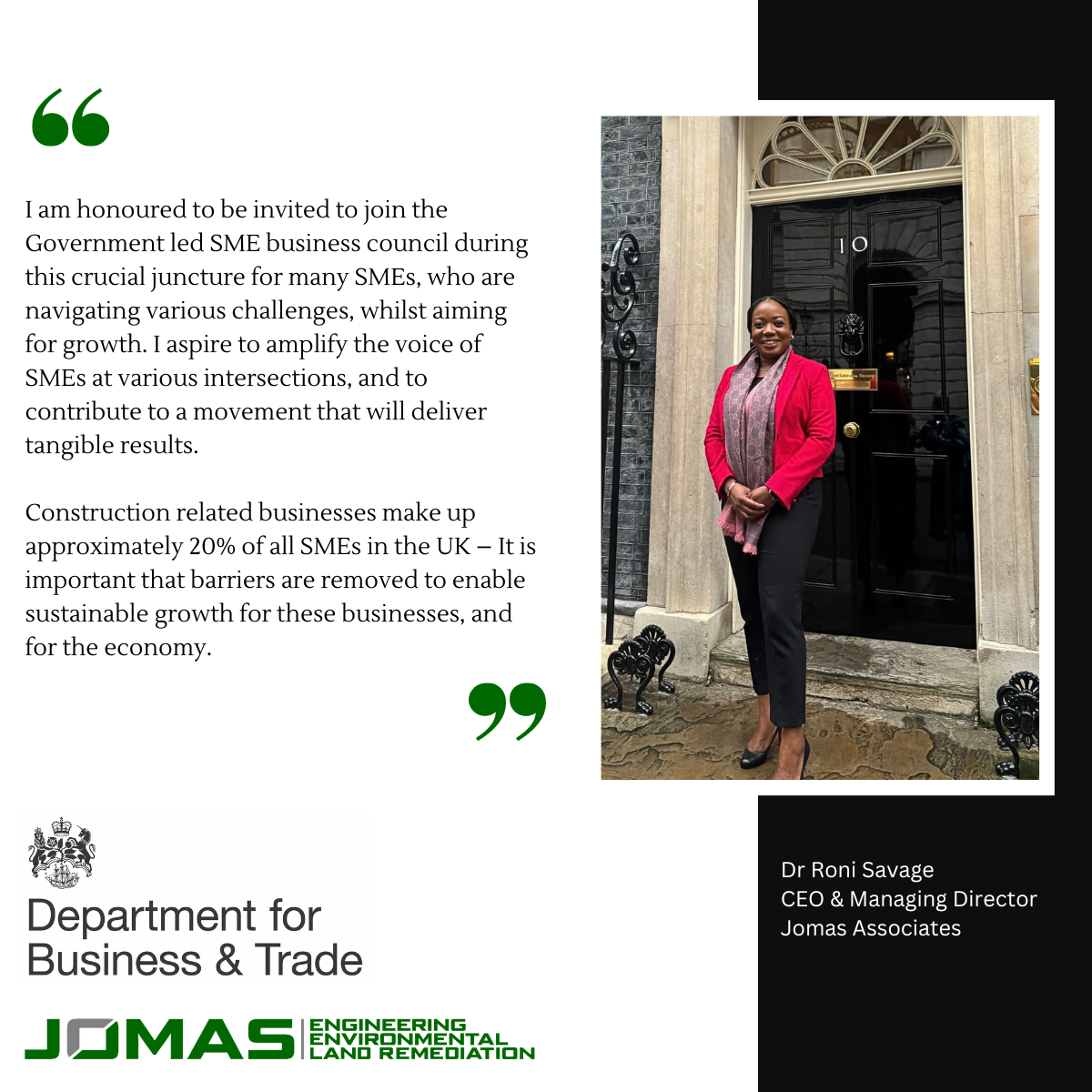Designing new residential homes, extensions, offices and industrial units as cost-effectively as possible is always part of a project brief, but to do this well, it is important that the site conditions are fully considered in the early stages of the design. Investment in a site investigation early on can potentially save a new development both time and money, as it highlights critical ground issues that need careful consideration before construction work starts. The findings of a site investigation can often inform the positioning of buildings. Jomas work with many architects across the UK, supporting the planning and development process.
What is a site investigation?
A site investigation in the first instance, typically involves desk-based research on the history and setting of the site, as well as a site walkover, to provide an initial overview of the nature of potential geotechnical and environmental hazards. Should further investigation be required, this is followed up with intrusive investigations. This utilises a range of ground investigation techniques such as trial pitting, window(less) sampling and cable percussive boreholes, to determine the conditions of the ground and highlight possible issues that may need to be considered as part of the development project.
Key Ground Issues for Architectural Planning
Foundation Design
It is important that ground conditions are assessed to inform the design of the foundations, and this is required for all new structures. An appropriate solution may comprise traditional strip or spread, pad, raft or piled foundations. A robust site investigation enables value engineering in the design of foundations. This not only ensures safe development but also meets the requirements of building control.
The development of a site can change the loading on the ground and altering the stress state can on occasion lead to ground movement. If a development involves a significant change to the stress being placed on the ground, it is important to determine the additional loads and potential impacts, and design foundations accordingly. Discover more in our case studies.
Land Contamination
Many developments are completed on brownfield sites and for many of these planning applications, a desk study (formerly known as Phase 1) report is required to validate the planning submission. The desk study also identifies whether or not a flood risk assessment (FRA) is required. Jomas undertake robust investigations to minimise our clients’ costs with respect to dealing with land contamination. It is important to understand that land contamination is not equal to contaminated land, and costly remediation may sometimes be unnecessary. Discover more in our case studies.
Geological Voids
Voids can occur in the ground over time, depending on the composition of the soil and underlying bedrock and water conditions, some rock deposits can dissolve leaving behind a void. These voids can cause a major problem for new developments and so early identification will create significant cost savings. The potential for ground voids and/or dissolution features is assessed from the desk study stage through to the ground investigations.
Historical Mineworks
In areas where coal mining has historically taken place, there is a risk that the ground may collapse due to cavities, as well as the potential instability of mine waste. With 11% of Britain sitting on a coalfield it is vital to assess and account for the risk posed by development in these areas. Previous mining areas also have other potential issues that can be identified such as hazardous ground gases, contaminated water and the risk of underground fire. The potential for mineworks is assessed from the desk study stage through to the ground investigations.
Trees
Tree protection needs to be considered as part of the overall planning of a new construction project, however, trees can also affect the stability of the land. An arboricultural impact assessment identities the impact of a construction project on the trees and the impact the trees would have on the new development, giving architects the details required to make any relevant adjustments to the plan. The tree survey also informs the design of foundations, where building on cohesive soils.
Impact of Basement Conversions
Basement conversions have become a popular way to add space to buildings in urban areas, however, these conversions have the potential to impact on ground conditions. Proper assessments are vital to identify the impact of the proposed basement on surface and groundwater, and the potential for ground movements arising from the basement development as well as any impact on adjoining or neighbouring properties.
Making assumptions about ground conditions during the design of a new project can often lead to subsequent and costly redesigns. With an in-depth understanding of the soil conditions before construction works start, the designs can account for any particular issues that have been identified early on in the project, minimising delays and saving both time and money.
Flood Risk Assessments (FRA)
Where a development is proposed in an area at risk of flooding, mitigation measures can be designed to enable the development to progress. Jomas FRAs cover any size or type of scheme in all sectors (residential, commercial, industrial, energy, education, public, private) and can be undertaken at every stage of the project i.e., project feasibility, site selection, pre or post planning.
Does your project need a site investigation?
A site investigation does involve a cost that may not have been accounted for, however, they provide added value by allowing you to plan and account for potential remedy work before the project starts. The investigation also allows value engineering when designing foundations.
For some projects, a site investigation is a requirement for planning. Aside from this, depending on the size of the project, the type of land and if the site has previously been developed on before, there are many different factors that will need to be taken into consideration to know if a site investigation is critical. We would always advise a site investigation if the site has:
- Signs of subsidence in existing buildings
- Problematic land conditions such as clay soil
- Been previously undeveloped
- Brownfield land
If you are unsure if your project requires a site investigation, or flood risk assessment, please do get in touch and we are happy to assess this and advise. Please email the project details to quotes@jomasassociates.com.



